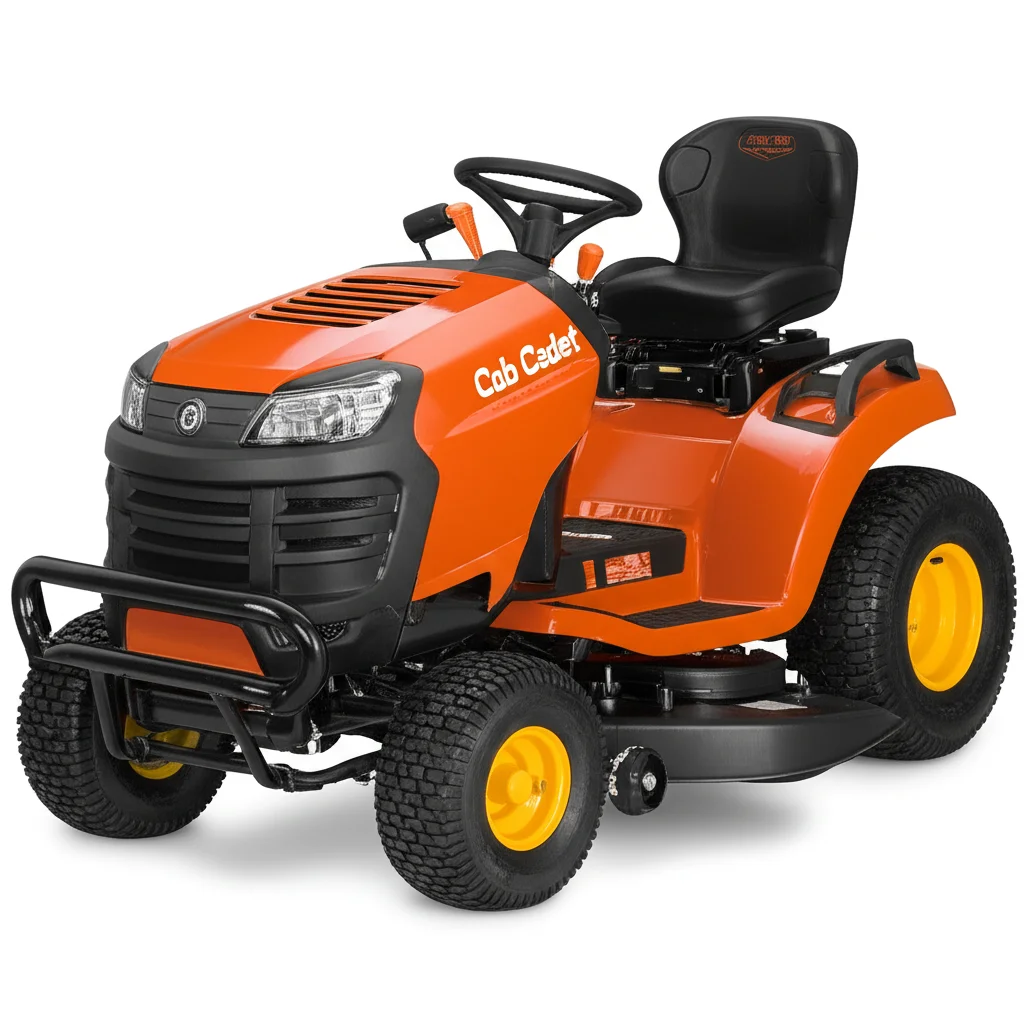· Lawn Mower Repair · 7 min read
Cub Cadet Xt1 Starting Problems

Cub Cadet XT1 Starting Problems: A Comprehensive Guide
Is your Cub Cadet XT1 refusing to start, leaving your lawn care on hold? Don’t worry, you’re not alone! The XT1 is a popular model, but like any machine, it can experience starting difficulties. This article will walk you through the most common causes of these problems and provide straightforward solutions to get you back to mowing. We’ll cover everything from simple fixes like checking the fuel to more involved troubleshooting steps. Let’s get your XT1 running smoothly again.
Takeaway:
- Check the fuel system for old gas or clogs.
- Inspect the battery and charging system.
- Ensure the safety switches are functioning correctly.
- Consider a spark plug replacement if needed.
Quick Answer: Cub Cadet XT1 starting problems often stem from a weak battery, old fuel, a clogged fuel filter, or a faulty safety switch. Regularly maintaining your mower and addressing these issues promptly will keep it running reliably.
1. Fuel System Issues: The Most Common Culprit
Often, a Cub Cadet XT1 won’t start because of problems within the fuel system. Old or contaminated fuel is a frequent offender. Gasoline degrades over time, especially when left sitting in the tank during the off-season. This degraded fuel can clog the fuel filter and carburetor, preventing the engine from getting the fuel it needs. It’s a good idea to add a fuel stabilizer when storing your mower for extended periods.
- Check the Fuel Level: Ensure you have enough fresh gasoline in the tank.
- Inspect the Fuel Filter: A clogged fuel filter restricts fuel flow. Replace it annually or more often if you suspect contamination.
- Drain Old Fuel: If the fuel is old (over 30 days), drain the tank and refill it with fresh gasoline.
- Carburetor Cleaning: If the fuel filter isn’t the issue, the carburetor might be clogged. You can try using a carburetor cleaner additive or, for more severe clogs, disassemble and clean the carburetor. For more information on carburetor issues, check out this guide on Cub Cadet zero-turn carburetor problems.
2. Battery and Charging System Problems
A weak or dead battery is another common reason why your Cub Cadet XT1 might not start. Batteries lose their charge over time, especially during periods of inactivity. The charging system is responsible for keeping the battery topped up while the engine is running. If the charging system isn’t working correctly, the battery won’t hold a charge.
- Battery Voltage Check: Use a voltmeter to check the battery voltage. A fully charged 12-volt battery should read around 12.6 volts.
- Battery Connections: Ensure the battery terminals are clean and securely connected. Corrosion can prevent a good electrical connection.
- Charging System Test: With the engine running, check the voltage at the battery terminals. It should be around 13.5-14.5 volts, indicating the charging system is working.
- Battery Replacement: If the battery is old or won’t hold a charge, it may need to be replaced.
3. Safety Switch Issues: Preventing Accidental Starts
Cub Cadet XT1s are equipped with multiple safety switches designed to prevent accidental starts. These switches are located under the seat, on the brake pedal, and on the blade engagement lever. If any of these switches are faulty, the mower won’t start. These switches are crucial for safety, so never bypass them.
- Seat Switch: Ensure you are fully seated when attempting to start the mower.
- Brake Pedal Switch: The brake pedal must be fully depressed.
- Blade Engagement Switch: The blade engagement lever must be disengaged.
- Switch Testing: You can test the switches with a multimeter to see if they are functioning correctly. If a switch is faulty, it will need to be replaced.
4. Spark Plug Problems: Ignition Issues
The spark plug is responsible for igniting the air-fuel mixture in the engine. A fouled or worn spark plug can prevent the engine from starting. Spark plugs wear out over time and can become covered in carbon deposits, making it difficult for them to create a spark.
- Spark Plug Inspection: Remove the spark plug and inspect it for wear, fouling, or damage.
- Spark Plug Gap: Check the spark plug gap using a feeler gauge. The gap should be set to the manufacturer’s specifications.
- Spark Plug Replacement: If the spark plug is worn or fouled, replace it with a new one.
- Spark Test: You can test if the spark plug is producing a spark by connecting it to the spark plug wire and grounding the metal body of the plug against the engine block while cranking the engine.
5. Air Filter: Restricting Airflow
A dirty air filter restricts airflow to the engine, which can cause starting problems and reduce performance. The air filter prevents dust and debris from entering the engine. A clogged air filter can create a rich fuel mixture, making it difficult to start.
- Air Filter Inspection: Remove the air filter and inspect it for dirt and debris.
- Air Filter Cleaning: If the air filter is slightly dirty, you can try cleaning it with compressed air.
- Air Filter Replacement: If the air filter is heavily soiled, replace it with a new one. Remember to reset the air filter cleaning message if your XT1 has one – you can find instructions on how to clean air filter message reset.
6. Hydrostatic Transmission Issues (Indirectly Affecting Starting)
While not a direct cause of starting problems, issues with the hydrostatic transmission can sometimes seem like starting problems. If the transmission is seized or experiencing significant resistance, it can put a strain on the engine, making it difficult to crank. This is more common if the mower has been sitting for a long time. If you suspect transmission issues, it’s best to consult a professional. You can learn more about Cub Cadet hydrostatic transmission problems here.
7. Engine Oil Level and Condition
Low or dirty engine oil can also contribute to starting difficulties. Oil lubricates the engine’s internal components, and insufficient lubrication can cause increased friction, making it harder for the engine to turn over.
- Check Oil Level: Use the dipstick to check the engine oil level. Add oil if necessary, using the type recommended in your owner’s manual.
- Oil Condition: Inspect the oil for dirt and debris. If the oil is dark and sludgy, it’s time for an oil change.
Frequently Asked Questions (FAQ)
Q: Why won’t my Cub Cadet XT1 turn over at all? A: This usually indicates a dead battery, a faulty solenoid, or a problem with the starter motor. Check the battery voltage first, then inspect the solenoid and starter for any signs of damage.
Q: My XT1 starts, but then dies immediately. What could be the problem? A: This could be caused by a clogged fuel filter, a faulty carburetor, or a problem with the safety switches. Start by checking the fuel filter and safety switches.
Q: How often should I replace the spark plug on my Cub Cadet XT1? A: Generally, you should replace the spark plug every 100 hours of operation or annually, whichever comes first.
Q: What does it mean if my Cub Cadet XT1 is hard to crank? A: A hard-to-crank engine can indicate a weak battery, low oil level, or internal engine problems. Check the battery and oil level first.
Conclusion
Troubleshooting starting problems on your Cub Cadet XT1 can seem daunting, but often the solution is a simple fix. By systematically checking the fuel system, battery, safety switches, and spark plug, you can diagnose and resolve most common starting issues. Remember to prioritize safety and consult your owner’s manual for specific instructions. Keeping your XT1 well-maintained will ensure years of reliable service. Don’t let a starting problem keep you from enjoying a beautifully manicured lawn – get your Cub Cadet XT1 running smoothly today!
- Cub Cadet XT1
- Riding Mower Problems
- Starting Issues

